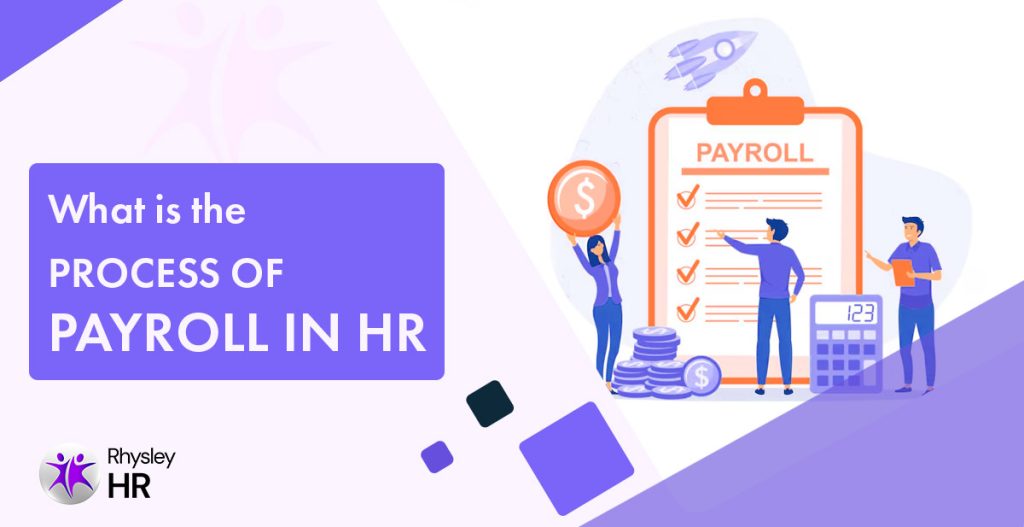Explore all premium features with a 1-Year Free Trial. Schedule your demo NOW!

What is the process of payroll in HR
In today’s business world, the human resources (HR) department has many important tasks beyond just hiring and dealing with employee issues. One of the key roles of HR is payroll processing, which involves making sure employees are paid accurately and on time.
Payroll is not just about numbers in a bank account; it affects how happy employees are, whether the organization follows the law, and the overall financial health of the company. This article will break down the steps involved in the payroll process, explain how HR departments handle payroll in different industries, and share tips for managing payroll effectively.
Understanding the Payroll-HR Connection
Before diving into the specific workflow, it’s essential to recognize that payroll processing exists at the intersection of human resources management and financial operations. While some organizations separate these functions into distinct departments, the underlying processes remain deeply interconnected. HR provides the foundational employee data that drives payroll calculations, while the financial implications of payroll decisions ripple throughout the company’s budgeting and strategic planning.
The Comprehensive Payroll Process Steps
The payroll management process follows a systematic approach that ensures accuracy, compliance, and timeliness. Let’s explore each stage of this critical workflow:
Gathering Employee Information
The salary processing in HR begins with collecting comprehensive employee data. This includes personal details, tax information, banking particulars, employment classification, and benefit selections. Modern HR systems maintain digital employee records that serve as the single source of truth for payroll processing.
Tracking Time and Attendance
Accurate time tracking forms the foundation of reliable payroll. Organizations implement various methods—from traditional timesheets to sophisticated biometric systems—to record worked hours, overtime, leaves, and absences. The HR payroll workflow depends on this data to calculate compensation accurately.
Calculating Gross Wages
Using the time and attendance information, payroll professionals calculate each employee’s gross wages. This calculation incorporates regular hours, overtime, bonuses, commissions, and any other compensation components specific to the organization’s compensation structure.
Managing Deductions and Withholdings
- The next step involves subtracting various deductions from the gross amount. These typically include:
- Mandatory tax withholdings (federal, state, and local)
- Social security and Medicare contributions
- Health insurance premiums
- Retirement plan contributions
- Court-ordered garnishments
- Other voluntary deductions
This complex calculation requires meticulous attention to detail and up-to-date knowledge of tax regulations.
Processing Net Pay
After accounting for all deductions, the payroll team determines the net pay—the actual amount employees receive. The HR payroll workflow then initiates the payment through direct deposits, physical checks, or alternative payment methods based on employee preferences.
Maintaining Compliance Records
Proper documentation represents a crucial element of payroll management. HR departments must maintain detailed records of all payroll activities, ensuring compliance with labor laws, tax regulations, and audit requirements. These records also provide essential reference points for addressing employee inquiries.
Filing Tax Reports and Remittances
The payroll process in HR includes timely submission of tax reports and payments to relevant authorities. This encompasses quarterly tax filings, year-end tax forms (such as W-2s or 1099s), and various other regulatory reports mandated by government agencies.
Technology’s Role in Modern Payroll Processing
- Today’s payroll management process increasingly relies on specialized software solutions that automate calculations, streamline approvals, and minimize human error. These systems integrate seamlessly with other HR functions, creating a comprehensive ecosystem for workforce management. Advanced payroll software offers features like:
- Automated tax table updates
- Employee self-service portals
- Customizable reporting capabilities
- Integration with time tracking systems
- Multi-jurisdiction compliance support
By implementing these technological solutions, organizations can significantly enhance the efficiency and accuracy of their payroll operations.
Best Practices for Effective Payroll Management
To optimize the salary processing in HR, consider adopting these proven best practices:
Establish clear payroll policies
Document procedures for handling overtime, leaves, advances, and other payroll-related matters.
Conduct regular audits
Periodically review payroll processes to identify inefficiencies or compliance gaps.
Invest in staff training
Ensure payroll personnel remain updated on changing regulations and system capabilities.
Implement multi-level verification
Institute checks and balances to catch errors before payments are processed.
Maintain open communication
Foster transparency with employees regarding payroll procedures and timelines.
Frequently Asked Questions
What are the main steps involved in the payroll process?
The main steps include gathering employee information, tracking time, calculating wages, managing deductions, processing payments, maintaining compliance records, and filing tax reports.
What is the difference between HR and payroll?
HR oversees the entire employee lifecycle, while payroll focuses on processing compensation. They work closely together, as payroll relies on HR data.
Why is payroll important in HR?
Payroll is vital for employee satisfaction, legal compliance, financial stability, and providing data for workforce planning and budgeting.
What happens if payroll is not processed correctly?
Incorrect payroll can cause employee dissatisfaction, legal penalties, damage to reputation, cash flow issues, and time-consuming corrections.
Conclusion
The payroll process in HR requires a careful balance of accuracy, compliance, and efficiency. As organizations face complex compensation structures and regulations, effective payroll management becomes essential.
By understanding the workflow and using the right technology, HR can turn payroll from a liability into a strategic advantage. Investing in strong payroll processes enhances employee trust, ensures compliance, and improves operational efficiency.